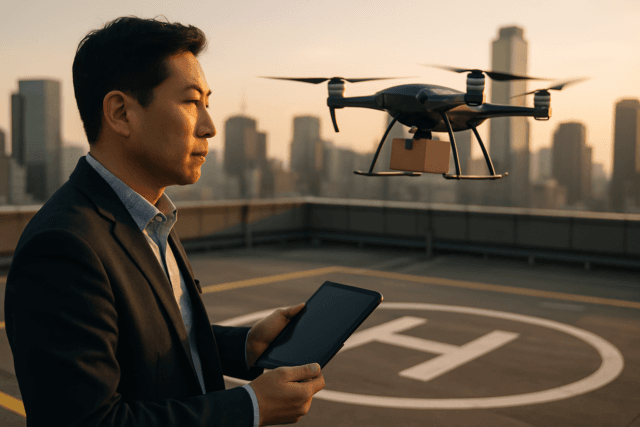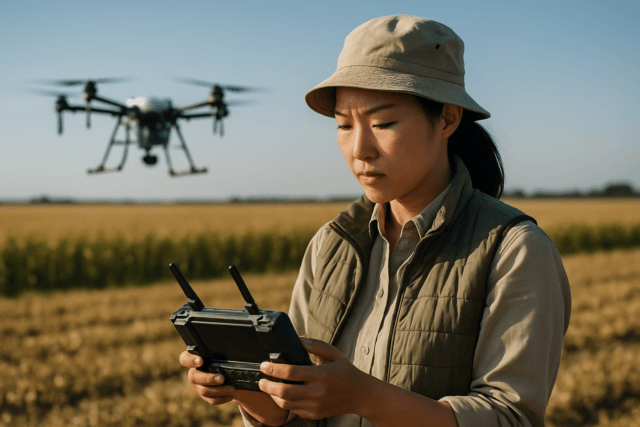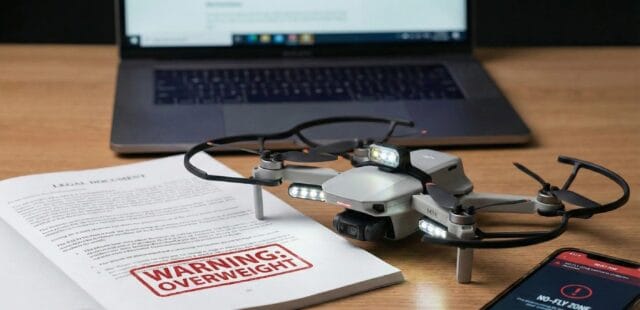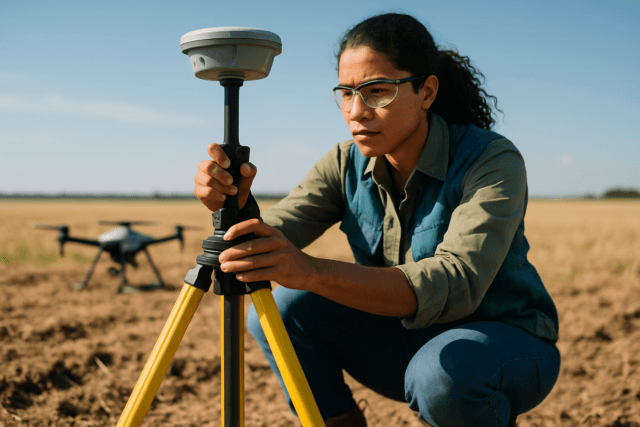The prospect of drones delivering packages to our doorsteps, once a futuristic vision, is rapidly becoming a tangible reality. Unmanned Aerial Vehicles (UAVs), commonly known as drones, are poised to revolutionize the logistics industry, offering solutions to challenges faced by traditional delivery methods and ushering in an era of faster, more efficient, and sustainable last-mile fulfillment. This evolving landscape is driven by technological advancements, increasing consumer demand for rapid delivery, and a growing focus on environmental impact.
The Imperative for Innovation in Delivery
Traditional logistics, heavily reliant on ground vehicles, grapples with a myriad of inefficiencies. Traffic congestion, high fuel consumption, and labor costs contribute to slower delivery times and increased operational expenses. The rise of e-commerce and the accelerating demand for instant gratification have amplified these pressures, compelling companies to seek innovative solutions.
Drones emerge as a compelling alternative, capable of bypassing traffic, navigating challenging terrains, and significantly reducing delivery times. The COVID-19 pandemic further accelerated the need for contactless delivery models, providing an additional impetus for the adoption of drone technology.
Benefits Redefining the Delivery Landscape
The advantages offered by drone delivery services are multifaceted, impacting operational efficiency, cost-effectiveness, and environmental sustainability.
Speed and Efficiency
Drones excel in speed, often delivering packages in minutes rather than hours. Their ability to utilize direct, shorter air routes and circumvent road congestion is a significant advantage, particularly for urgent or time-sensitive deliveries such as medical supplies or perishable goods. Companies like Zipline, for instance, have demonstrated the ability to deliver medical supplies within a half-hour in Ghana.
Cost Reduction
While initial setup costs for drone infrastructure can be high, drone delivery promises substantial long-term operational savings. Analysts suggest that operating costs for drone delivery can be 40% to 70% lower than traditional vehicle delivery models. This reduction stems from minimizing the need for large vehicle fleets, decreasing fuel expenses (especially with electric drones), and potentially lowering labor costs as drones operate autonomously without breaks. Projections indicate that the average unit cost per delivery could drop by over 70% in the next decade, potentially surpassing traditional last-mile delivery costs.
Environmental Impact
Electric-powered drones offer a greener alternative to fossil-fuel-dependent vehicles, contributing to reduced carbon emissions. One drone, for example, could save up to 45 tons of CO2 emissions annually, equivalent to the carbon storage of 1,800 trees. This aligns with global efforts to reduce carbon footprints and promote eco-friendly business practices.
Enhanced Accessibility
Drones can reach remote, rural, or otherwise hard-to-access locations that traditional vehicles struggle with, such as mountainous regions, islands, or disaster-stricken areas. This capability makes them invaluable for humanitarian aid and ensuring equitable access to essential services and medical supplies in underserved communities. Royal Mail, the UK’s postal service, has tested drone deliveries to improve accessibility in remote areas of Scotland’s Orkney Islands.
Contactless Delivery
The contactless nature of drone delivery offers enhanced convenience and safety, a benefit highlighted during the recent pandemic.
The Technology Underpinning Drone Delivery
The rapid evolution of drone delivery is fueled by continuous innovation across multiple technological fronts.
Advanced Drone Design
Modern delivery drones incorporate sophisticated designs, often featuring dual-propulsion systems for vertical takeoff and precise landing, as seen in Wing’s drones. Future drones are expected to be larger, with increased payload capacity, allowing for the delivery of heavier and more diverse goods. Innovations like hybrid drones, such as Zipline’s P2 and Amazon’s MK30, combine vertical takeoff capabilities with extended range. Some developers are even exploring cargo aircraft designed exclusively for autonomous operation, with impressive flight ranges and significant cost and carbon emission reductions.
Autonomous Navigation and AI
At the heart of drone delivery systems are autonomous navigation capabilities, enabling drones to fly, avoid obstacles, and deliver goods without human intervention. This is achieved through the integration of artificial intelligence (AI) and machine learning algorithms. AI assists drones in planning optimal routes, dynamically adapting to real-time changes in weather, traffic, and other airborne objects. Advanced sensors, including LiDAR and infrared cameras, are crucial for obstacle detection and avoidance, ensuring safe navigation in complex environments.
Battery and Power Systems
While limited battery life (typically 20-40 minutes of flight time) has been a significant constraint, advancements are addressing this challenge. Companies are exploring more powerful batteries, hydrogen fuel cells, and even solar-powered drones to extend flight endurance and energy efficiency. Smarter battery management systems are also enhancing the efficiency of existing power sources.
Air Traffic Management
As drone operations scale, managing airspace becomes critical. Advanced Unmanned Aircraft System Traffic Management (UTM) solutions are being developed to prevent collisions and ensure safe, coordinated drone flights. Governments are also working towards creating dedicated “drone highways” that self-manage traffic for bulk operations.
Key Players and Market Landscape
The drone delivery market is characterized by significant investment and activity from established tech giants, logistics providers, and specialized drone manufacturers.
Major Industry Players
- Amazon Prime Air: A pioneering force, Amazon has invested heavily in drone delivery for over a decade, with a focus on speed, cost-effectiveness, and scalability. They have launched services in the US, with plans to expand trials to Italy and the UK.
- Wing (Alphabet subsidiary): Known for its lightweight, autonomous aircraft, Wing operates on three continents and has partnered with retailers, logistics, and healthcare organizations.
- Zipline: A leader in medical supply delivery, Zipline has completed over a million drone deliveries for hospitals and major brands like Walmart, particularly in remote areas of Africa.
- UPS Flight Forward: UPS’s drone subsidiary has received regulatory approvals to conduct deliveries beyond the visual line of sight, enabling larger-scale operations.
- Walmart: Actively expanding its drone delivery coverage, particularly in areas like Dallas-Fort Worth, partnering with Zipline and Wing.
- DHL: Another global logistics giant exploring and implementing drone delivery services.
- Matternet: A specialist drone delivery operator and technology provider, notable for obtaining early approvals for package delivery under specific regulations.
Market Projections
The global drone package delivery market is projected for substantial growth, estimated to reach USD 8 billion by 2027 at a Compound Annual Growth Rate (CAGR) of 41.8%. Forecasts suggest that in 2026, over one million drones will conduct retail deliveries, a significant leap from 20,000 in previous years. By 2035, the serviceable addressable market in the United States alone is projected to reach $5 billion, with approximately 1.5 billion annual deliveries. E-commerce is expected to be a dominant segment, accounting for 42.6% of the global share by 2025. North America currently holds the largest share of the global drone delivery services market, followed by Europe and East Asia. Asia, particularly China and Japan, also leads in the adoption of drone delivery for parcels and shipments.
Challenges and Regulatory Landscape
Despite the immense potential, the widespread adoption of drone delivery faces several significant hurdles, primarily regulatory, technological, and societal.
Regulatory Hurdles
One of the most complex challenges is navigating the evolving and often stringent regulatory frameworks imposed by aviation authorities like the Federal Aviation Administration (FAA) in the US and the Civil Aviation Authority (CAA) in the UK.
- Visual Line of Sight (VLOS): Historically, regulations have required drones to remain within the operator’s visual line of sight, severely limiting operational range and scalability. While exemptions for Beyond Visual Line of Sight (BVLOS) operations are being granted to some companies, it remains a lengthy and complex process.
- Airworthiness Certification: Obtaining airworthiness certifications for drones, similar to manned aircraft, is another challenge, requiring exemptions and extensive paperwork.
- Airspace Management: Integrating a growing number of autonomous drones into existing air traffic management systems requires advanced technologies and new protocols. Governments are working on guidelines and frameworks to ensure safe integration.
- Varying Laws: Different states and localities may have varying laws, complicating nationwide implementation for businesses.
Technological Limits
- Battery Life and Payload: As noted, limited battery life restricts flight range, and current drones are often restricted to relatively light packages (typically less than 5 kg).
- Environmental Hazards: Drones must contend with weather conditions like high winds, heavy rain, and extreme temperatures, which can affect stability, battery life, and flight accuracy. Obstacle detection and avoidance systems are crucial for navigating around buildings, power lines, and even birds.
- Automation: Achieving fully autonomous drone operations without human intervention for complex tasks remains a goal, though significant progress is being made.
Public Acceptance and Security Concerns
Public acceptance is a critical factor. Many consumers harbor concerns regarding privacy, safety, and security. The integration of cameras and GPS technology in drones raises apprehensions about personal information and potential surveillance. Additionally, risks such as theft of packages or potential damage to drone equipment, as well as hacking threats, need to be mitigated. Public education campaigns and a gradual introduction of services are crucial to building trust.
Infrastructure Requirements
Setting up drone launch pads, battery charging facilities, and aligning drone movement with existing urban and operational spaces requires significant initial investment and careful planning. While suburban and rural areas are generally better suited for earlier adoption due to less complex environments, urban deployment will require dedicated air corridors and sophisticated infrastructure.
The Road Ahead
Despite the challenges, the trajectory for drone delivery is one of continued growth and integration into the global logistics framework. Companies are heavily investing in research and development to overcome existing limitations, focusing on:
- Advanced Navigation and Safety: Improving collision avoidance, geofencing, quieter propulsion systems, and redundant safety mechanisms.
- Energy Solutions: Developing longer-lasting batteries, exploring hydrogen fuel cells, and refining solar-powered drone capabilities.
- Regulatory Collaboration: Working closely with regulatory bodies to establish comprehensive and scalable frameworks for drone operations, including BVLOS flights and autonomous systems.
- Hybrid Models: Exploring multi-modal solutions that combine drones with land vehicles or autonomous robots to optimize delivery efficiency, particularly for longer journeys or specific last-mile challenges.
- Public Engagement: Conducting public education campaigns and demonstrating the benefits and safety of drone delivery to foster wider acceptance.
The future of delivery will likely see a hybrid model where drones complement traditional logistics, offering an unparalleled level of speed, efficiency, and sustainability. As technology advances and regulatory landscapes mature, receiving a package via drone is set to become an increasingly common, if not ubiquitous, experience.





